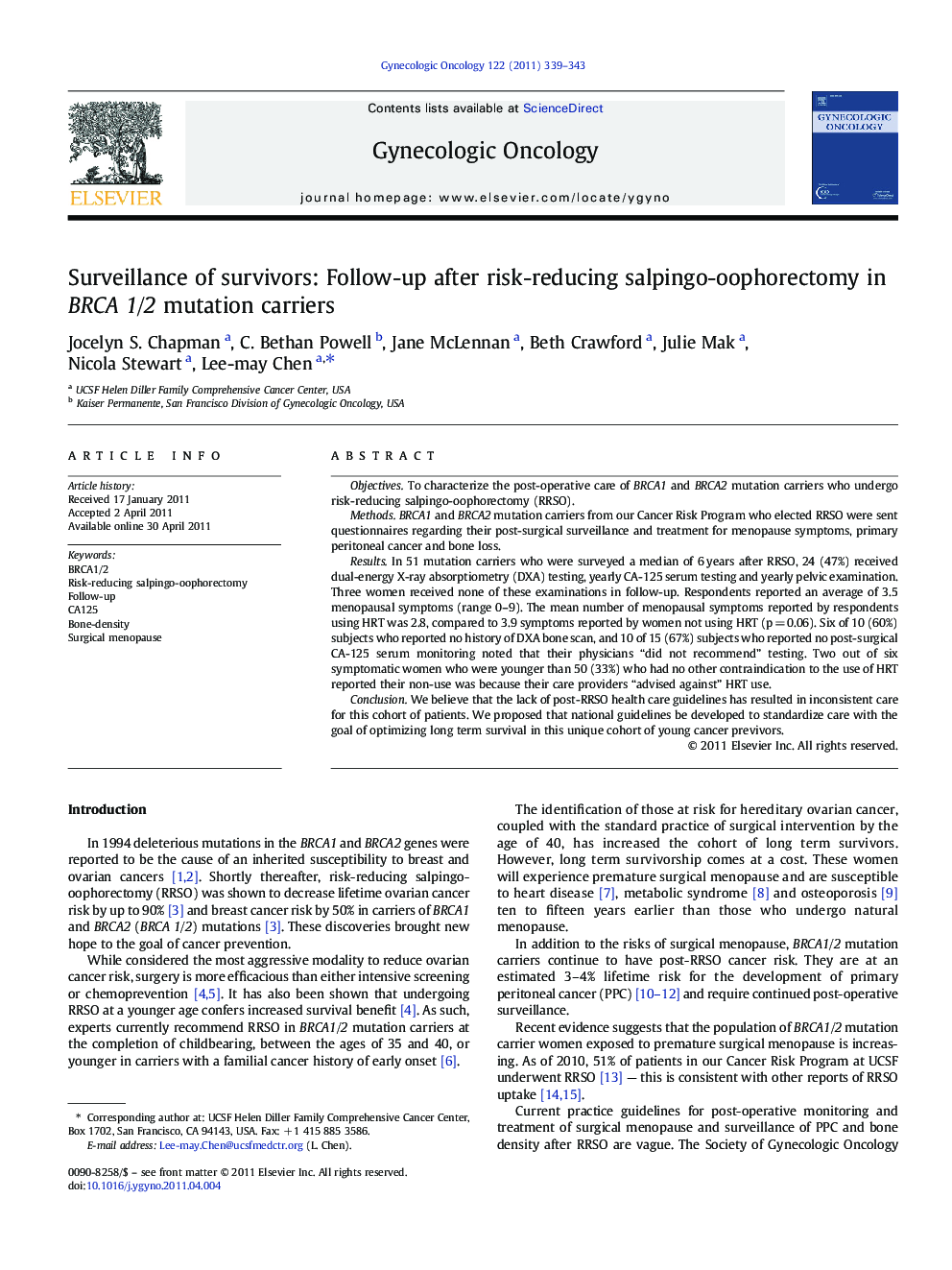| Article ID | Journal | Published Year | Pages | File Type |
|---|---|---|---|---|
| 3947090 | Gynecologic Oncology | 2011 | 5 Pages |
ObjectivesTo characterize the post-operative care of BRCA1 and BRCA2 mutation carriers who undergo risk-reducing salpingo-oophorectomy (RRSO).MethodsBRCA1 and BRCA2 mutation carriers from our Cancer Risk Program who elected RRSO were sent questionnaires regarding their post-surgical surveillance and treatment for menopause symptoms, primary peritoneal cancer and bone loss.ResultsIn 51 mutation carriers who were surveyed a median of 6 years after RRSO, 24 (47%) received dual-energy X-ray absorptiometry (DXA) testing, yearly CA-125 serum testing and yearly pelvic examination. Three women received none of these examinations in follow-up. Respondents reported an average of 3.5 menopausal symptoms (range 0–9). The mean number of menopausal symptoms reported by respondents using HRT was 2.8, compared to 3.9 symptoms reported by women not using HRT (p = 0.06). Six of 10 (60%) subjects who reported no history of DXA bone scan, and 10 of 15 (67%) subjects who reported no post-surgical CA-125 serum monitoring noted that their physicians “did not recommend” testing. Two out of six symptomatic women who were younger than 50 (33%) who had no other contraindication to the use of HRT reported their non-use was because their care providers “advised against” HRT use.ConclusionWe believe that the lack of post-RRSO health care guidelines has resulted in inconsistent care for this cohort of patients. We proposed that national guidelines be developed to standardize care with the goal of optimizing long term survival in this unique cohort of young cancer previvors.
Research highlights► We examine medical surveillance after risk-reducing salpingo-oophorectomy in BRCA1/2 mutation carriers. ► Testing and surveillance for bone loss, menopause, and peritoneal cancer is inconsistent. ► Optimizing survivorship after RRSO requires standardized national guidelines.
